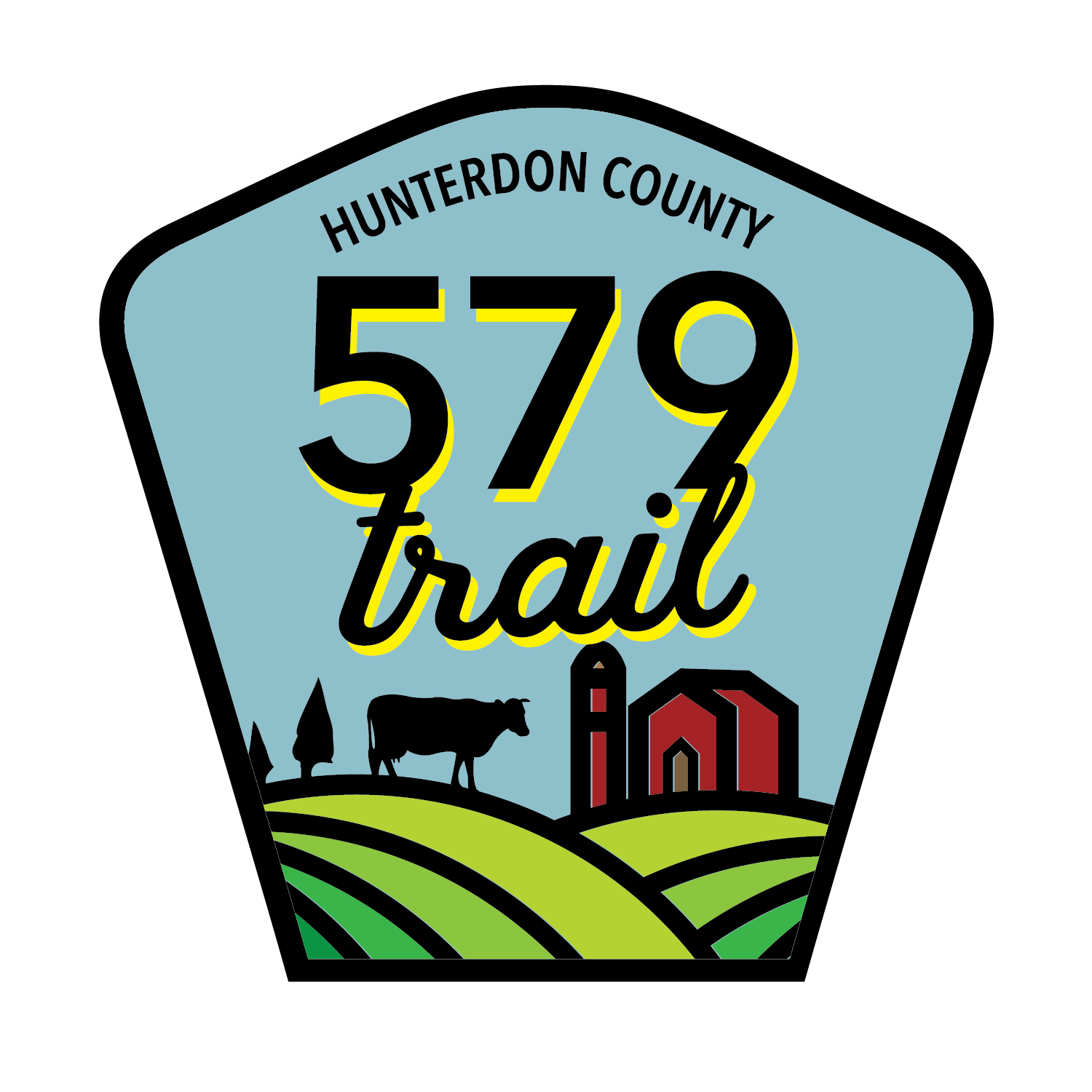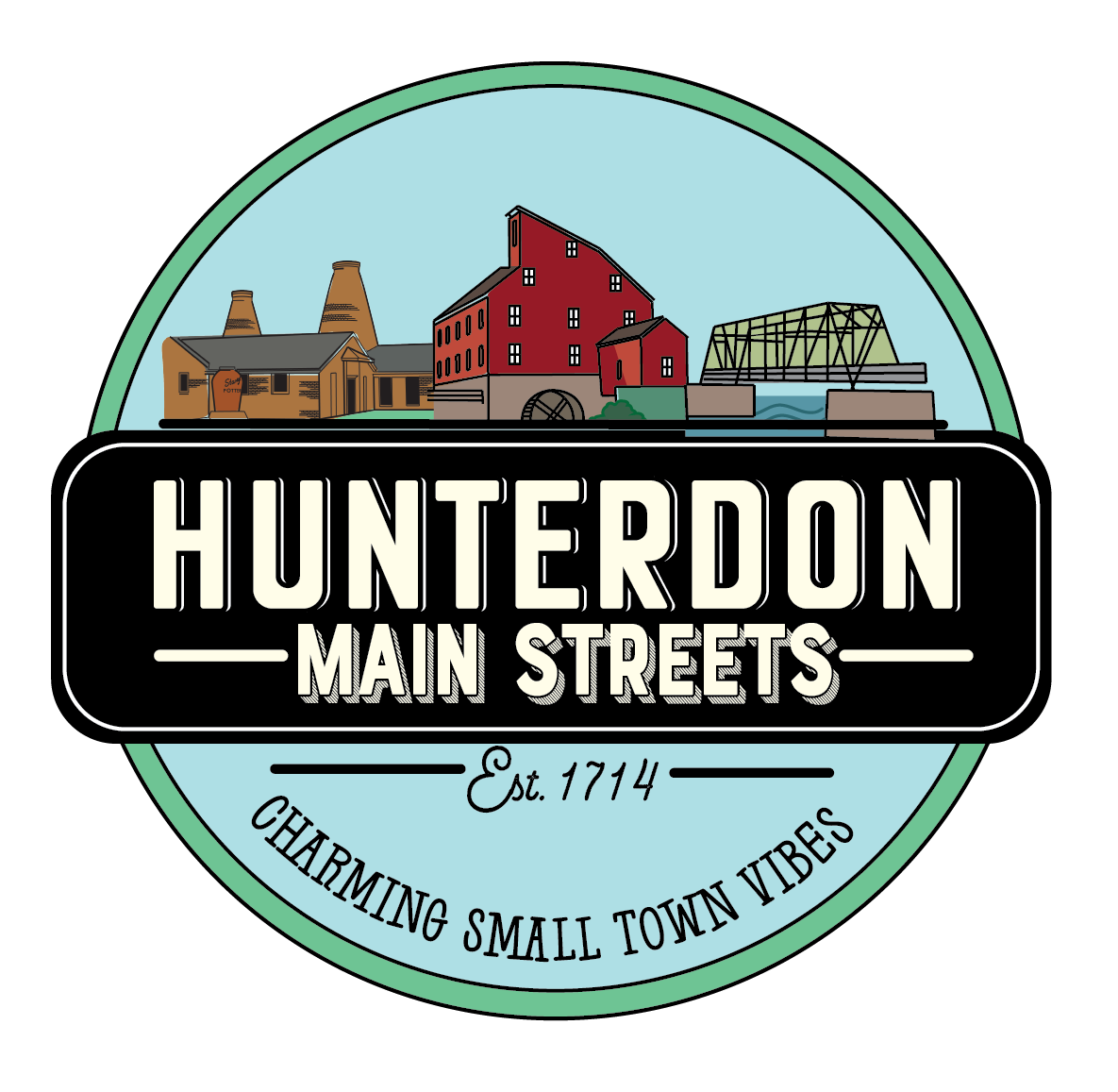STOP 1
Hunterdon County Courthouse
Built on the site of the 1791 courthouse, the Greek Revival Structure has been renovated to appear as it did during the famous Lindbergh baby kidnapping trial in 1935. The 1926 stone jail at the rear held accused Bruno Hauptmann during the trial
STOP 2
Horse Fountain
Erected in 1902, the fountain was intended to provide refreshment to people on the sidewalk, horses on the street, and dogs on the side.
STOP 3
Hall of Records
Standing since 1870, the fine Italianate structure, originally built with three separate doorways each with its own steps, was remodeled in 1928 to what you see today. Note the “common” bricks used on the sides of the building as a cost-saving technique.
STOP 4
Samuel Southard Law Office
Standing since 1811, the Samuel Southard Law Office remains a beautiful building on Flemington’s Main Street. Mahlon Fisher updated the simple clapboard structure to its current Greek Revival style in 1840. The Women’s club and local merchants renovated it and opened it for a time in the late 1920’s as a women’s public restroom.
STOP 5
Capnerhurst
One of the oldest buildings on Main Street (1760), the stucco over stone and brick structure still retains its carriage houses in the rear now used as offices. It is a fine example of preservation and adaptive reuse of a historical structure.
STOP 6
Capner I Brodhead House
A simple Federal Style brick house is hidden under the many late 1800s renovations of the property. The porte corchere provided an elegant place to park a carriage.
STOP 7
War Monument Statue
The original monument statue, built in 1882, honored the Civil War veterans and has been renovated to reflect all those who have served in the military to date.
STOP 8
Presbyterian Church & Cemetery
This is the third church built on this site since the congregation was founded in 1791. The newest addition built in 1883 includes a plethora of beautiful stained-glass windows, some of which are signed by Louis Comfort Tiffany. The cemetery contains graves of revolutionary war soldiers.
STOP 9
Roselawn
Established in 1890, Roselawn was a compellation of three homes owned by a wealthy retailer, William Emery. Just a third of the estate and garden remains.
STOP 10
Town Clock Rea Building
Step back to 1874 to see the clock face on this fine example of Italianate architecture. Built by clock maker George Rea, you’ll find initials surrounding the round pediment window.
STOP 11
Bank Building
The classic brick and stone building first built in 1897 survived a first floor fire in 1901. Multiple entryways have been changed over the years. Today it is occupied by Northfield Bank and other local businesses.
STOP 12
Union Hotel
Built in 1877 on the site of an old stagecoach stop between New York and Philadelphia. Journalists from all around the world stayed here when covering the Lindbergh trial. It is under construction and part of the downtown redevelopment area.
STOP 13
Children’s Choir School
The structure, originally built in 1895 as a stable, housed the Choir school from 1895-1958. The Choir School is credited with starting the national junior choir movement and it brought together singers from all denominations.
STOP 14
Doric House
The Doric House was built in 1846 in the Greek Revival Style by Mahlon Fisher, a country carpenter who built it as his private residence. Today it is operated as a house museum by the Hunterdon County Historical Society.
STOP 15
Flemington United Methodist Church
The congregation, dating back to 1823, originally built their church at 21-27 Main Street (no longer there). To make room for this new stone structure, a house was moved to Broad Street.
STOP 16
Reading I Large Residence
Mahlon Fisher built this ornamental Greek Revival house for the Reading family. Many details are replicas from the Greek temples, but the rooftop detailing no longer exists. Today is houses the Hunterdon Chamber of Commerce and the Unity Bank Center for Business and Entrepreneurship.
STOP 17
Flemington Public Library
Built in 1910 on brick and stone on land donated by Hiram Deats, the library was designed to sit back from Main Street so that Mr. Deats, whose office was next door in the Deats Building, would have an unobstructed view of the town.
STOP 18
Deats Building
Built in 1881 by a wealthy gentleman farmer and collector Hiram Deats, this Italianate structure has eight chimneys and was the first building in Flemington to have electricity and telephones.
STOP 19
Flemington Baptist Church & Cemetery
This was the first church incorporated in NJ, in 1795. In 1868, a grand cathedral was constructed on this site seating up to 800. In 1926, the church was destroyed by a New Year’s Day fire, after which the present-day church was built in 1927.
STOP 20
Central Railroad Station
Around the turn of the century, Flemington was the home to three separate rail lines. Passenger service ended in 1953. A branch of Unity Bank occupies the train station.
STOP 21
Reading I Dorf Residence
Designed in 1845 by Mahlon Fisher for two brothers, the impressive home is actually two symmetrical houses joined in the center with matching staircases. The homes had separate owners until 1942.
STOP 22
Bartles I Fisher Residence
The Italianate home erected in 1877, was built by George Bartles, who lived with his family in a simple wooden structure on what is now the front lawn. Their father, Charles Bartle, a prominent lawyer, is credited with introducing sidewalks and shade trees to Flemington’s Main Street.
STOP 23
Anderson I Holcombe Fisher Residence
Built in 1856 as a rare symmetrical Queen Anne house, only two prominent families lived here prior to 1934 purchase and subsequent opening of the funeral home by Charles Fisher.
STOP 24
Fulper Residence
Standing since the early 1800s the Fulper Residence was built as a simple clapboard house. The house was most recently remodeled in 1924. The Fulpers decorated the house in stucco with eclectic flair, using broken Fulper tiles, which glistened in the sunlight. The third floor was built as an open patio garden.
STOP 25
Fulper I Craig Residence
In 1924, the Fulper houses were only six feet apart when the heirs to the Fulper pottery moved this magnificent structure to its present site, adding a hip roof and large porches for entertaining.
STOP 26
Stangl Pottery Factory & Groundhog Kiln
The large kilns are the centerpiece of this repurposes factory used today as an art gallery, farmer’s market, coffee shop, restaurant, and popular concert venue. The Groundhog Kiln and log cabin are iconic structures from the past.
STOP 27
Chief Tuccamirgan Grave I Case Cemetery
The Native American Chief formed a close relationship with the family of John Phillips Case who lived on the site of the Dvoor Farm just up the road. Legend says Chief Tuccamirgan was buried in a sitting position facing the east, with his tomahawk.
STOP 28
Samuel Fleming House
Built in 1756 and once called the Flemington castle, this was the home of Irish-born Fleming, an early settler and tavern owner, for whom the town is named. It was purchased in 1928 and preserved by the local chapter of the Daughters of the American Revolution. Today it is a house museum.
STOP 29
Flemington Lyceum/Reading Academy/Borough Hall
An early site of the Reading Academy, this building served as the Lyceum, a center for public lectures and concerts, and a meeting place for temperance organizations. Flemington purchase it in 1922 for a Borough Hall and Fire Department.
STOP 30
Court Street Park
in 1901, Sara Elizabeth Temple, then president of the Flemington Woman’s Club, organized a Village Improvement Committee to create this lovely town park. The Flemington Women’s Club still meets in the building adjacent to the park. A sundial along one walkway displays the date, not the time.





